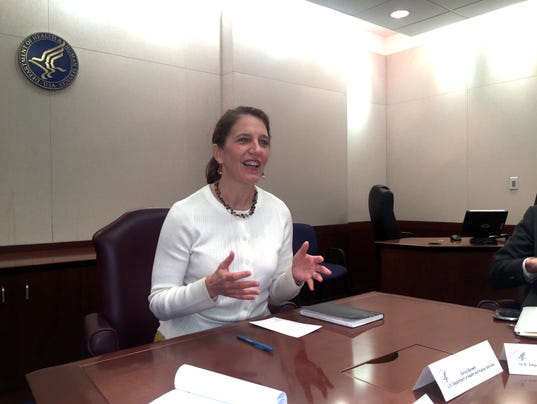[ad_1]

The 4 million new people who signed up for insurance on the federal HealthCare.gov exchange for 2016 are one of several signs the open enrollment period that ended Sunday was a success, Health and Human Services Secretary Sylvia Burwell said Friday.
Burwell's comments marked her last press briefing to summarize an Affordable Care Act open enrollment. By this time next year, there will be Obamacare but no more Obama administration.
As further evidence of the administration's successes, Burwell also pointed to her continued discussions with states considering expanding Medicaid to all of those earning too little to get subsidized ACA plans.
These talks, she says, show it's not if states will expand Medicaid but rather "a question of when." She cited two main factors for this: The higher rate of hospital closures in states that haven't expanded Medicaid and howmany people left without coverage are working.
"Helping people who are working and playing by the rules is something that is an important concept most people agree on," she said.
Brian Blase, a former Republican congressional aide now with the free market Mercatus Institute, says he's "surprised 20 states still haven’t expanded Medicaid" since the federal government is paying states for all of the new enrollees.
The remaining states haven't expanded Medicaid, Blase says, because they worry the cost "trajectory is unsustainable" and HHS could eventually cut its money to states, which would in turn force them to drop people from Medicaid.
Burwell says she will be leaving the ACA enrollment process in far better shape than she found it in. The technological problems that hurt the website when it opened in October 2013 are mostly a memory, identity verification has been improved, and the final tally for signups on the federal and state exchanges was 12.7 million people.
The number of new enrollees addresses a complaint from insurers that their customers have more health problems than expected and that they game the system to get care and then drop their plans once they receive treatment.
These "news," as Burwell called them, "can leaven the risk pool. They weren’t the people who were most in need."
Next steps for the agency will be to continue to reform the costly way health care is delivered in this country, including by testing ways to incorporate social services into the efforts, Burwell says. This includes new research into the benefits of linking patients to social services, which she says builds on the move towards healthcare that focuses on quality and value over the quantity of treatments.
"We need to fundamentally think about how we can deliver health care differently," she said.
That includes "helping people connect with services differently," she said. One of the most important hires many doctors and hospitals make, she said, are people who make sure people take their medications, connect them with behavioral health providers or help them with housing or food.
Many of hospital costs are driven by people who need such social services, use emergency rooms frequently and are enrolled in both Medicare and Medicaid. She cited hospitals that have reduced ER visits by linking people with housing and other services.
"We are on this path towards change," she said.
Burwell also said "quality and affordability" of health care remains a concern of hers and must be a goal of consumers as they continue to shoulder more of the costs of their own care.
Quality is getting hard to find, however. A report out Friday by the Robert Wood Johnson Foundation found more than half of hospitals reduced the number of insurance networks they were in for 2016. The percent of hospitals that were only in-network with one ACA exchange plan increased from 7% in 2015 to 20% in 2016. When compared to U.S. News & World Report's most highly-rated hospitals, RWJF found nearly all were in-network with at least one exchange plan.
[ad_2]



